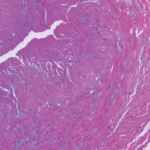“We are desperate for steroid-sparing therapies in GCA and PMR,” she said.
Clinicians also shouldn’t forget about the importance of exercise.
ad goes here:advert-1
ADVERTISEMENT
SCROLL TO CONTINUE
“We’ve all seen what happens to our patients on high-dose steroids,” she said. “They lose muscle. They gain fat, they are weak, fatigued and tired. So early prescription of an exercise program for strengthening and fall prevention is important for GCA and PMR.”
References
- Avina-Zubieta JA, Bhole VM, Amiri N, et al. The risk of deep venous thrombosis and pulmonary embolism in giant cell arteritis: A general population-based study. Ann Rheum Dis. 2016 Jan;75(1):148–154.
- Ball EL, Walsh SR, Tang TY, et al. Role of ultrasonography in the diagnosis of temporal arteritis. Br J Surg. 2010 Dec;97(12):1765–1771.
- Arida A, Kyprianou M, Kanakis M, et al. The diagnostic value of ultrasonography-derived edema of the temporal artery wall in giant cell arteritis: A second meta-analysis. BMC Musculoskelet Disord. 2010 Mar 8;11:44.


